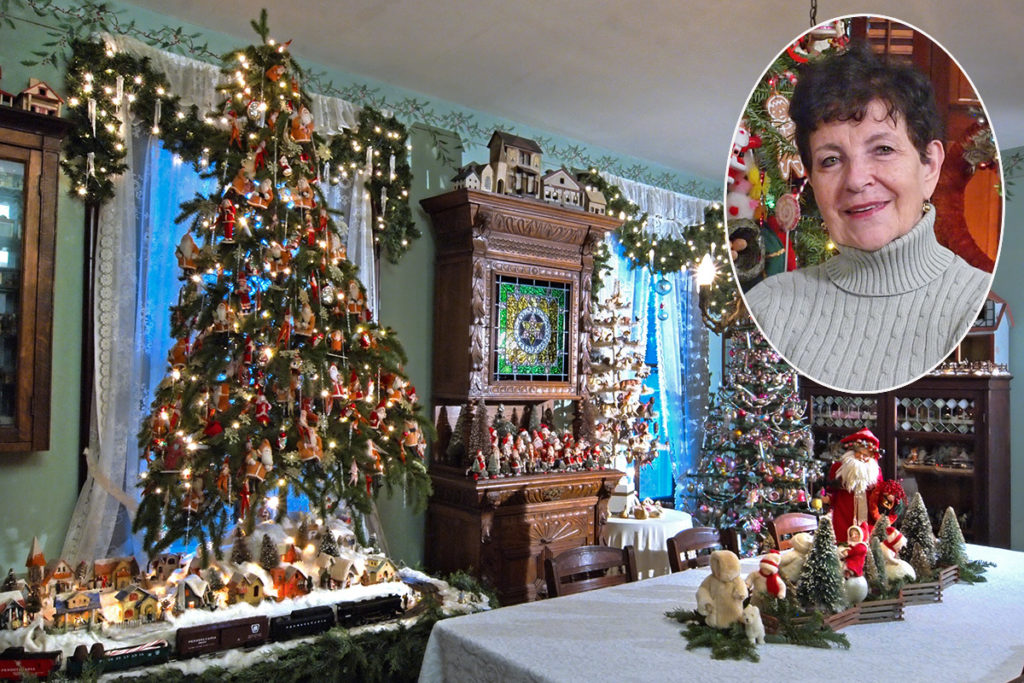

Although millions have wistfully wished over Christmas Eve glasses of mulled wine or steaming cider that EVERY day could be filled with the joy and wonder of Christmas, very few ever achieve that vision. Yvonne Carpenter of Haddonfield, NJ, is one of those lucky few.
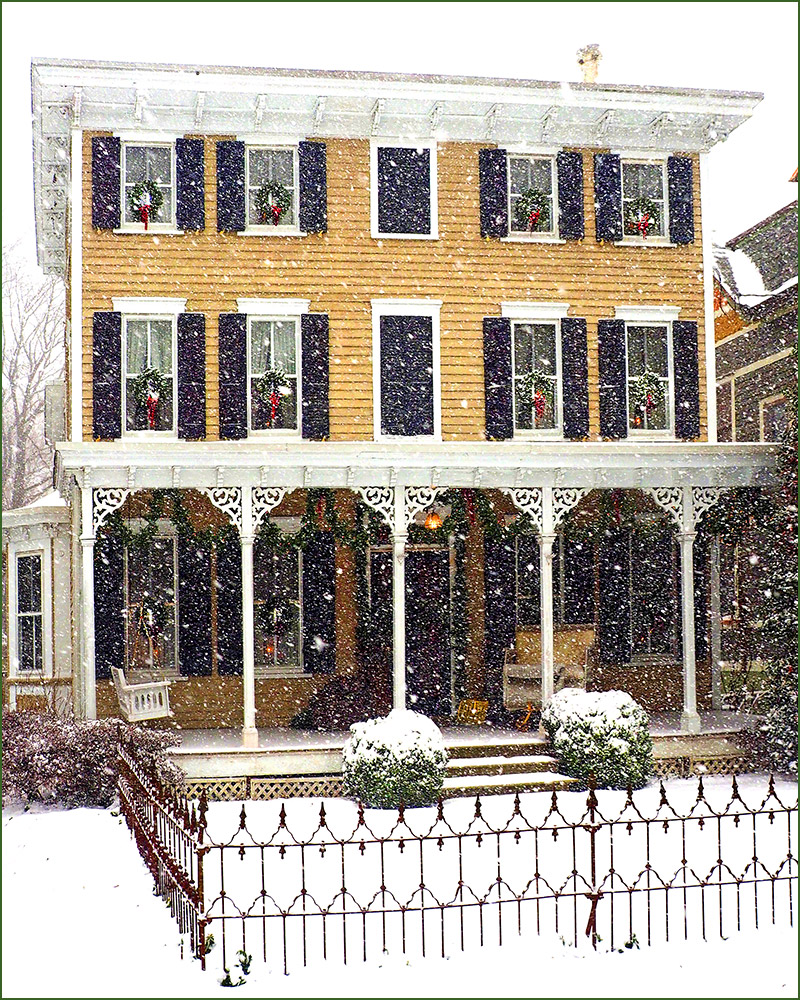
For thirty years, the artist made Christmas the enveloping environment of her business and her life in a way few of us can imagine. Every day, for decades, she climbed to a third-floor studio permanently hung with garland and decorated trees, and resonant with her favorite carols. There, she designed, sculpted, cast, carved, painted and stitched together large, ornate figures of Santas, belsnickels and other traditional Yuletide characters and animals for collectors and high-end gift shops across the country.
Christmas ephipany
A former art teacher who experienced a Christmas ephipany as a young woman, she became a serious collector of antique Christmas artifacts. But unable to afford many of the items she craved, she launched Snickels & Kringles, a company whose only product was her creative work, and whose revenues allowed her to feed her own voracious collecting habit.
At one of Yvonne Carpenter’s early appearances at a gift show, a vendor ordered 400 of her handmade Nativity lambs — a project that required her to carve 1,600 wooden lamb legs, and turned her basement into a mini-factory and her husband into the Snickels & Kringles’ chief engineer.
At another point, with nearly the entire house turned into workshop areas, the Carpenter family explored the idea of “going big” and expanding into a much larger-scale manufacturing and distribution business. Ultimately they rejected the idea.
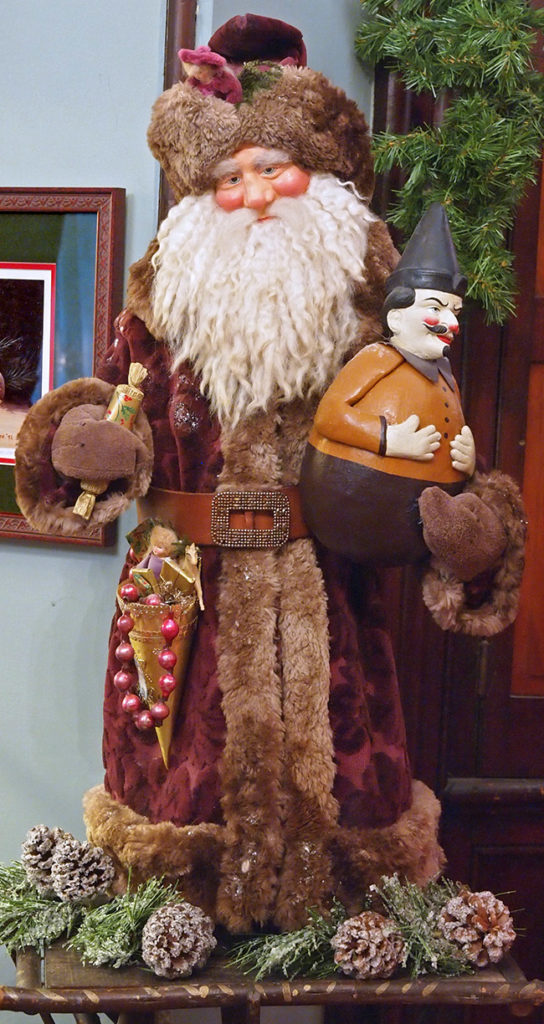
Living the spirit
“To me, the true joy of all this was conceiving and creating lovely individual things,” the Christmas artist said. “I didn’t want to be a corporate executive; I wanted to be an artist whose work was the act of living the spirit of Christmas.”
“In the 90s,” she continued, “after China became a force in the U.S. Christmas artisan market, there were some really big changes; many American artists thought it was great to be able to create something one time and then ship it off to China to be duplicated in large numbers for ridiculously low wholesale prices. I didn’t want to be part of that. I wanted to be selling American art made by an American artist who was in it because she felt so deeply connected to the subject.”
Hampered by arthritic hands and weakening eyesight, Yvonne Carptner recently closed her Snickels & Kringles business and now focuses on curating a collection of thousands of old-time Christmas artifacts that fill the rooms of her house from floor to ceiling in lush, museum-like displays that span the history of Christmas celebrations from the 1800s to the early 1900s.
“People come into my house and you can see it makes them feel happy and takes them back to memories of some of the most meaningful times of their lives — and I love that,” said Carpenter. “For me, it’s a very magical experience.”
Touchstone old things
“The kind of environments I’ve created attract people because this is what they want to believe Christmas used to be like,” she continued. “A time when the world seemed slower and more caring, and Christmas meant more in terms of emotional connections and personal joy than it does today. I think people yearn for that and are drawn to these touchstone old things and designs because of that.”

The daughter of a doll maker, Carpenter took little interest in her mother’s creative pursuits growing up in Vineland, N.J. It was a remote, rural area of southwestern New Jersey then known for vast stretches of farmland, glassworks and riverside mills. She was eight years old when World War II ended, and family life was a hardscrabble affair.
“We had almost nothing,” she remembered, “even most of our pots had been donated to the metal drives for the war effort,” she said. “People around us made the things they used, including dolls. Christmas was exciting but very different. We didn’t have many ornaments, so we took old Christmas wrapping paper, cut it into strips, and made chains. Our tree had almost nothing but paper chains on it.”
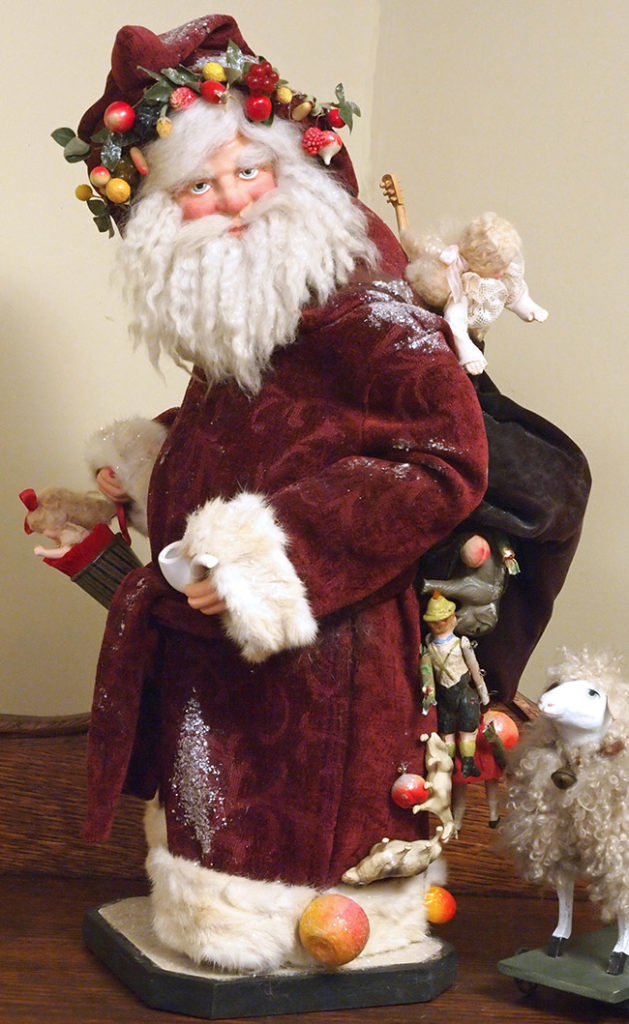
Dolls’ legs at breakfast
Her mother, Alva, operated Alva’s Doll Hospital from the family kitchen. “I remember coming down the stairs to breakfast, and on a string across the kitchen were hung all these doll legs she had just painted. There were always doll wigs, glass eyes and half-finished doll clothes all over the place” Carpenter said.
“Back then, there were no charge cards or big-box stores crammed full of plastic dolls. It was a completely different situation,” Carpenter said. “Composition or bisque dolls were family pieces that were loved and mended and passed down.”
“I vividly remember all the people who came knocking on our door with broken dolls to be fixed,” she said. “Or, they’d want to buy one that she had made. She had this huge cupboard filled with finished dolls.
Hated antiques as a teen
“When I was a teenager, I was never involved in what my mother was doing,” Carpenter said. “I had no interest in old-fashioned dolls. I was all about modern art and modern things; chrome and glass were my favorites. I hated antiques.”
“During all the years I was growing up, my mother made all my clothes, even prom gowns,” Carpenter continued, “I would see a beautiful and very complicated dress on the cover of Seventeen magazine, and she would make that same dress for me. All my friends had store-bought clothes and I envied them so — but years later, some of them told me how much they had envied me because my clothes had been so unique.”

Carpenter followed her interest in modern art to become a member of the first graduating class of art students from Glassboro State College, the New Jersey institution now known as Rowan University. She went on to become an art teacher, and along the way, paid a holiday visit to a college friend who had purchased a historic home in Beverly, N.J.
“I walked into this house and there was a Christmas tree in every room and the entire environment was like a Christmas wonderland,” the Yvonne Carpenter said. “I had never felt the way that house made me feel. It was a real fork-in-the-road experience for me. That’s when I began to let go of the glass and chrome and ultra-modern things and started thinking in a different way.”
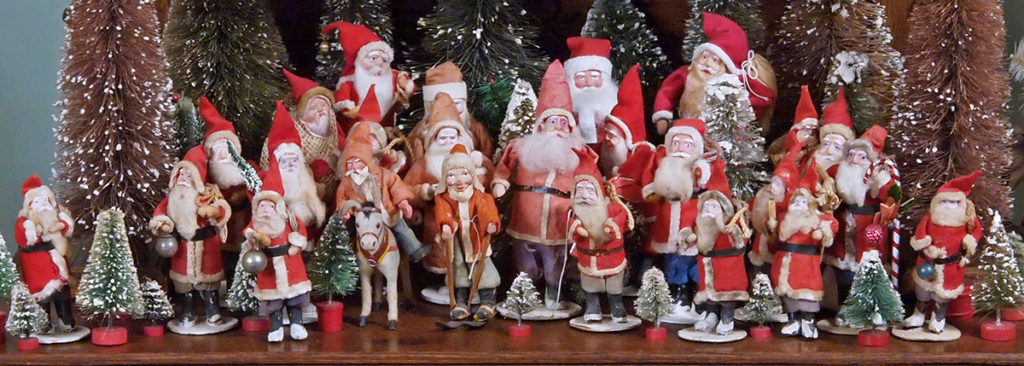
“Collecting steers your whole life,” she noted.
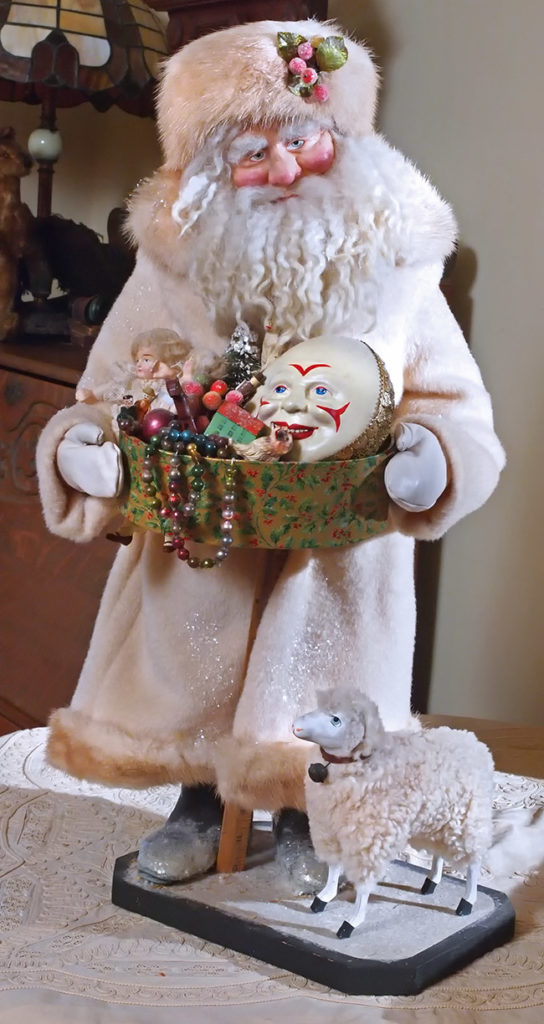
A Japanese Santa
Her Christmas-specific collecting began in earnest when she was helping to clean out her deceased grandmother’s basement. “I came across this little antique Japanese Santa and something about it just touched me,” she said. “A week later I was at a flea market and found another, similar one for 50 cents. But as I continued to hunt for and buy these little Santas, their prices continued to go up to the point where I couldn’t afford them any longer. So, like an art teacher, I took a couple of them apart to see how they were made and began designing and making them myself.”
“At the same time, I started to appreciate the old German post cards with their incredible images of ‘Father Christmas’ on them,” she said. “That’s when this complete other world began to really talk to me and draw me in.”
Snickles & Kringles
The final catalyst in the launch of her Snickels & Kringles company was joining the Golden Glow of Christmas Past, a national club of collectors and artisans specializing in old-fashioned Christmas objects and arts.
“When you go to a Golden Glow convention, you just step into a totally enchanted environment,” said Carpenter. “It’s the happiest four days you can imagine. Everyone is so sharing, and you come away with this sense of total joyfulness.”
By the 1980s, working in a third-story studio often festooned with strung lines of freshly-painted doll legs, Santa faces and belsnickel hands, Carpenter organized her life around the daily celebration and creation of ornately-detailed, old-fashioned Christmas figurines and artifacts. Her work and reputation was ultimately showcased in a number of national magazines.
“The only thing I regret about it all,” said Yvonne Carpenter, “is that I didn’t start earlier; that it took me so long to find out what really mattered to me. By essentially ‘becoming’ my mother in my art, I finally came to appreciate what an incredibly talented artist she really was.”

